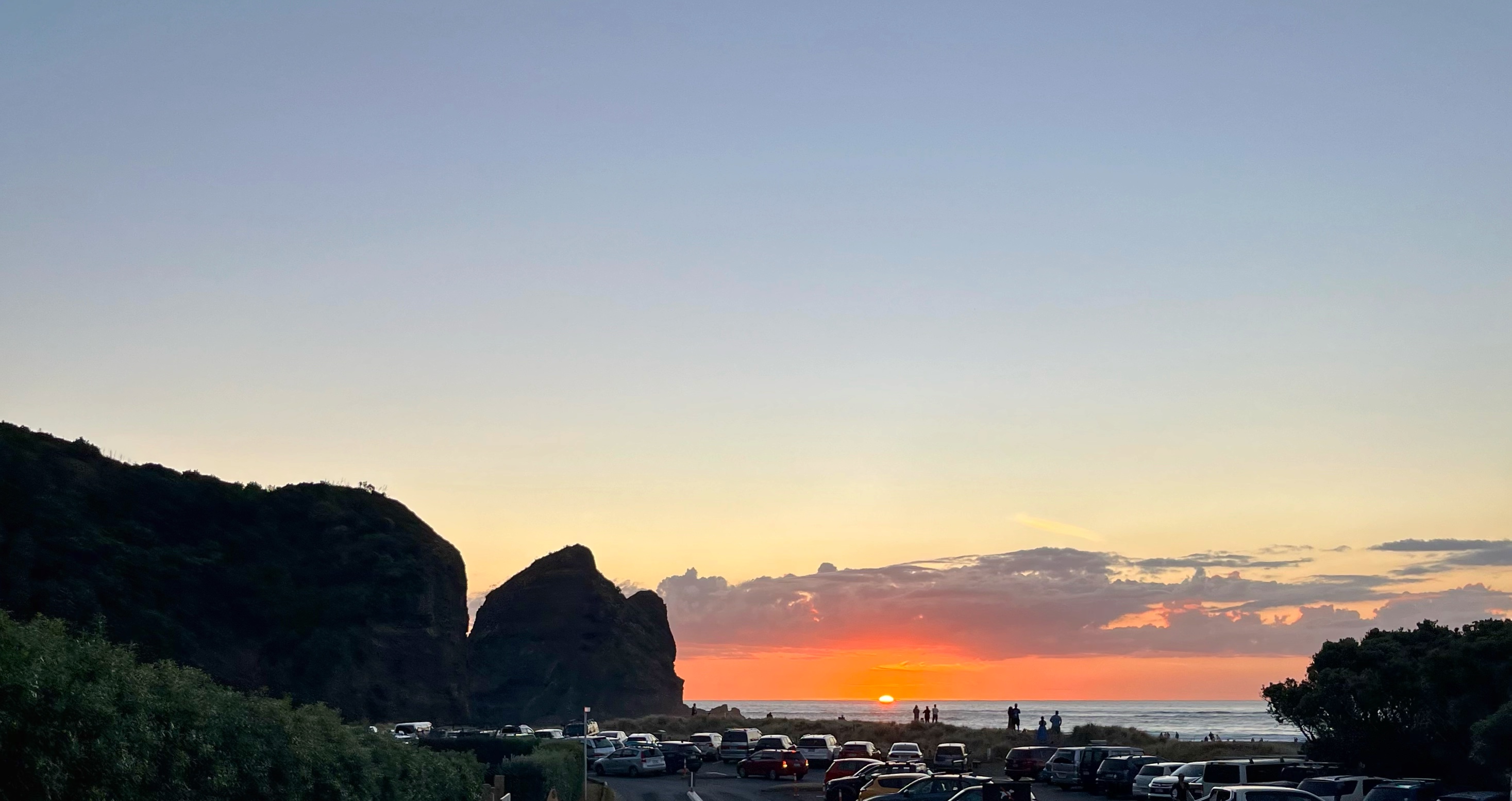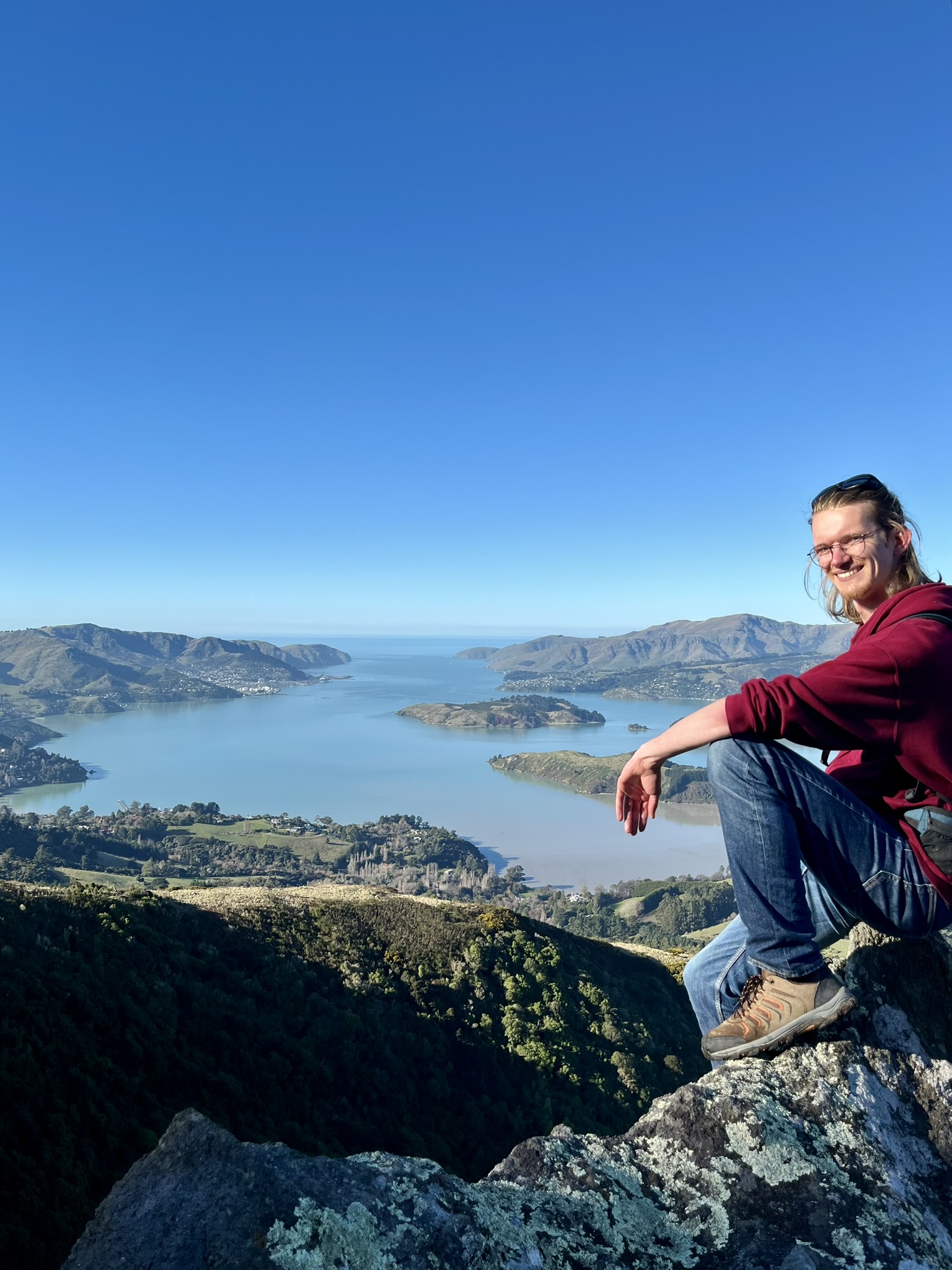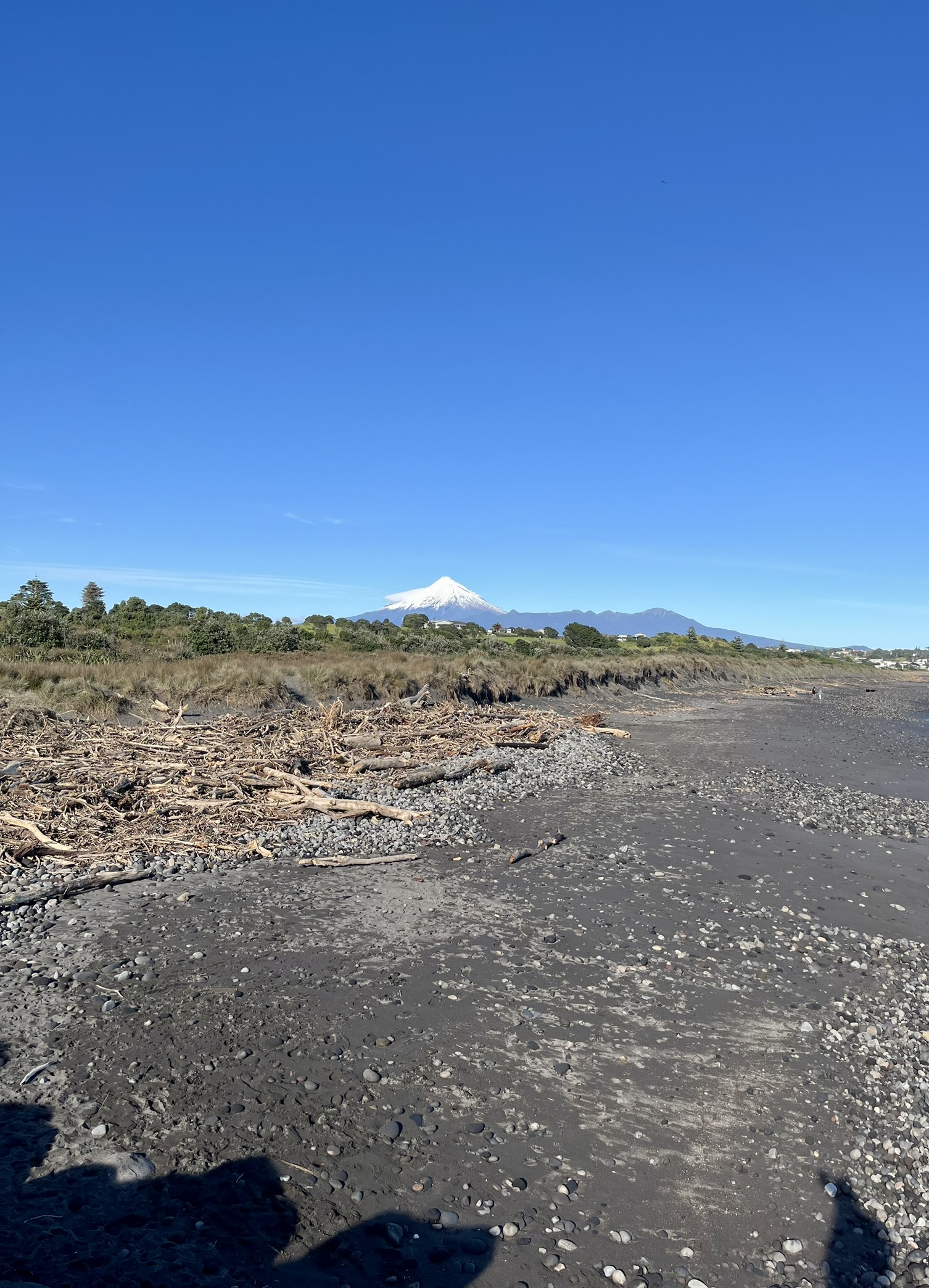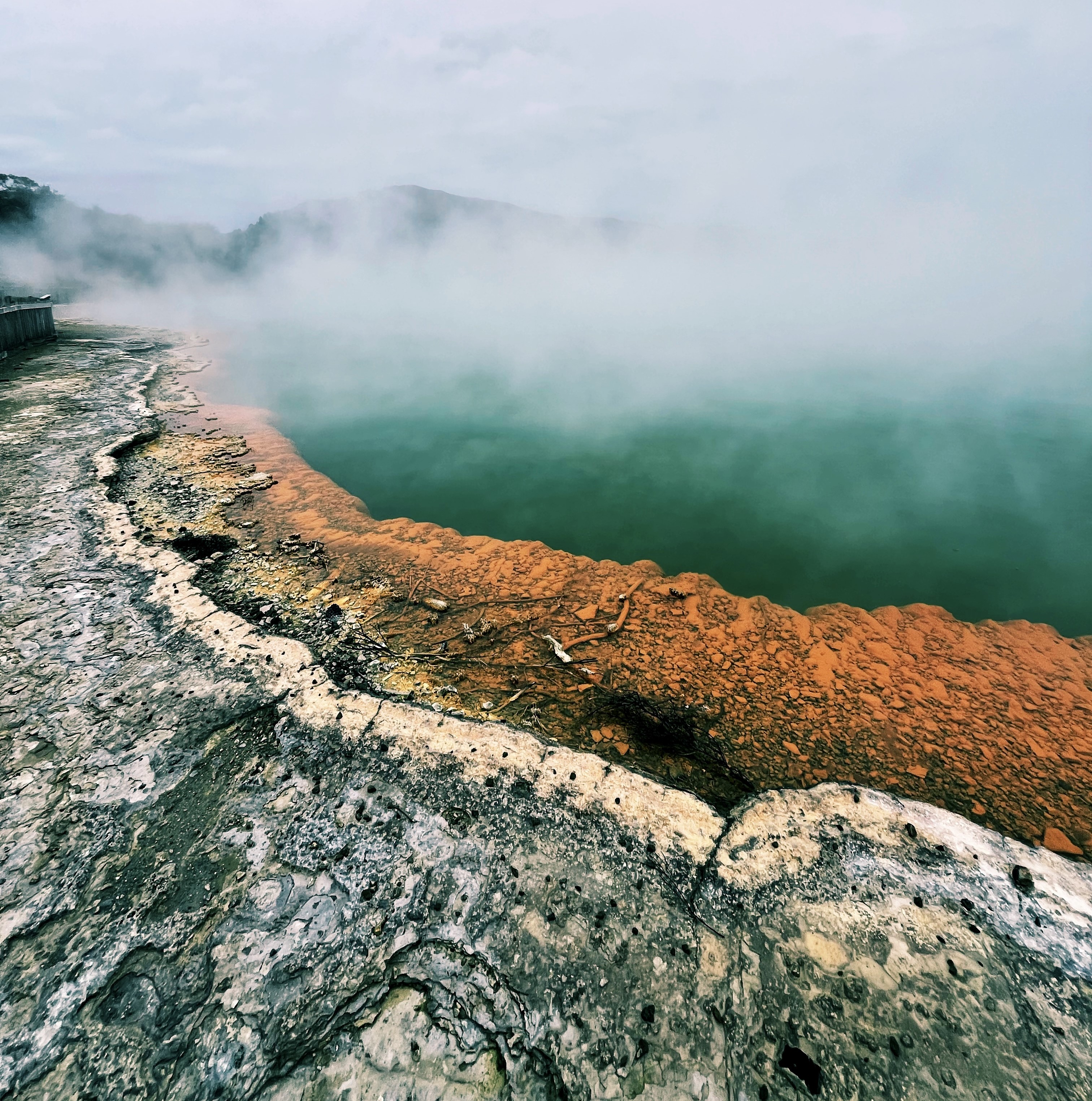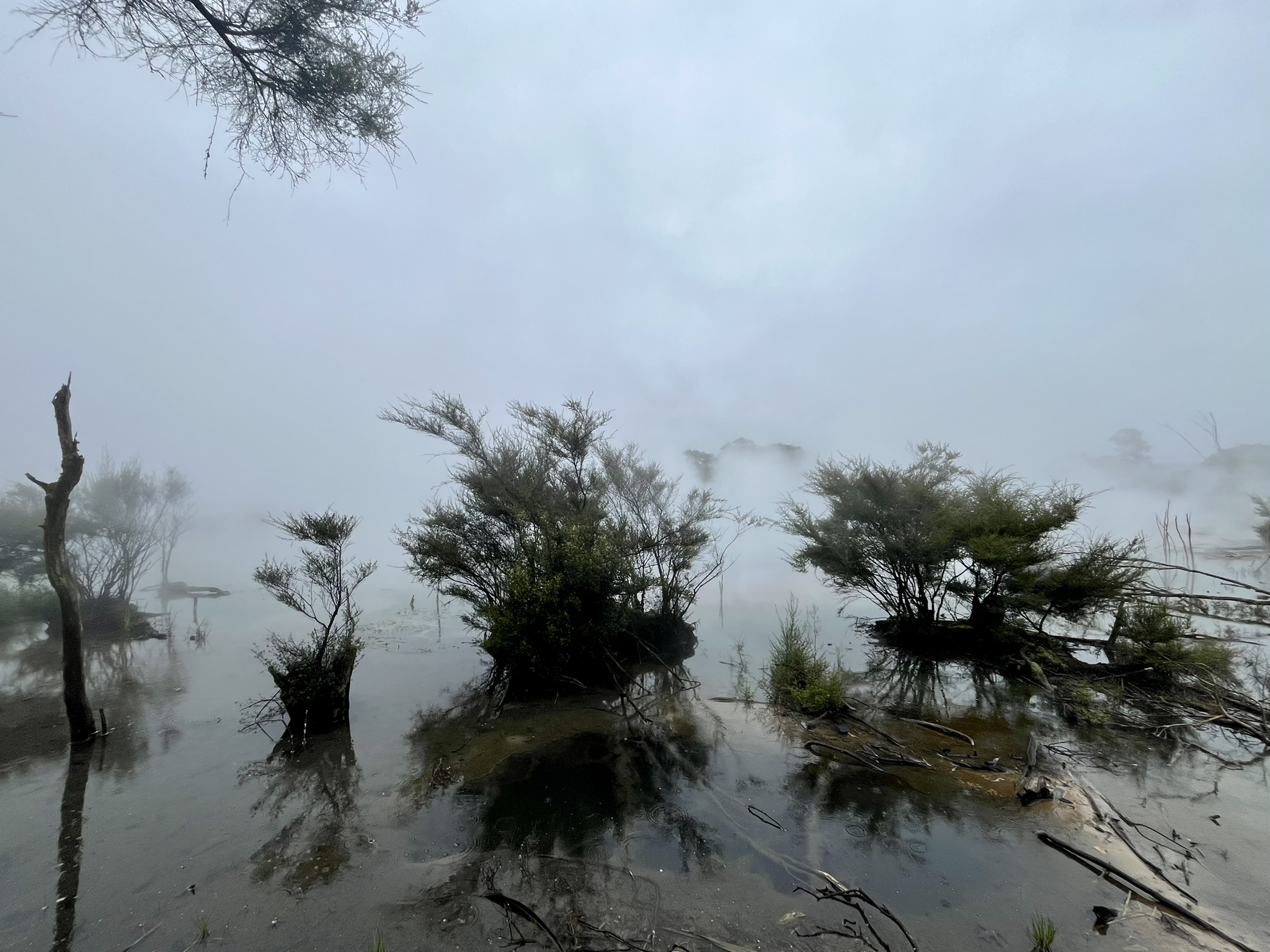Piha
Following the Marae event came O-week, the university orientation. This started out Monday morning (the 24th of February) with standing in a very long queue to register attendance. Then we had a morning of information, interspersed with a cookie break. On the whole it was quite good, but very long. After the information session I had a quick lunch before it was time for the Amazing Race organised by the Study Abroad Society. Basically it was a scavenger hunt around Auckland with different more or less silly tasks to be completed in two hours. On the whole a very fun event, and met some new people as well as working with a few I met during the weekend. Unfortunately we didn’t win, but that’s how it goes sometimes.
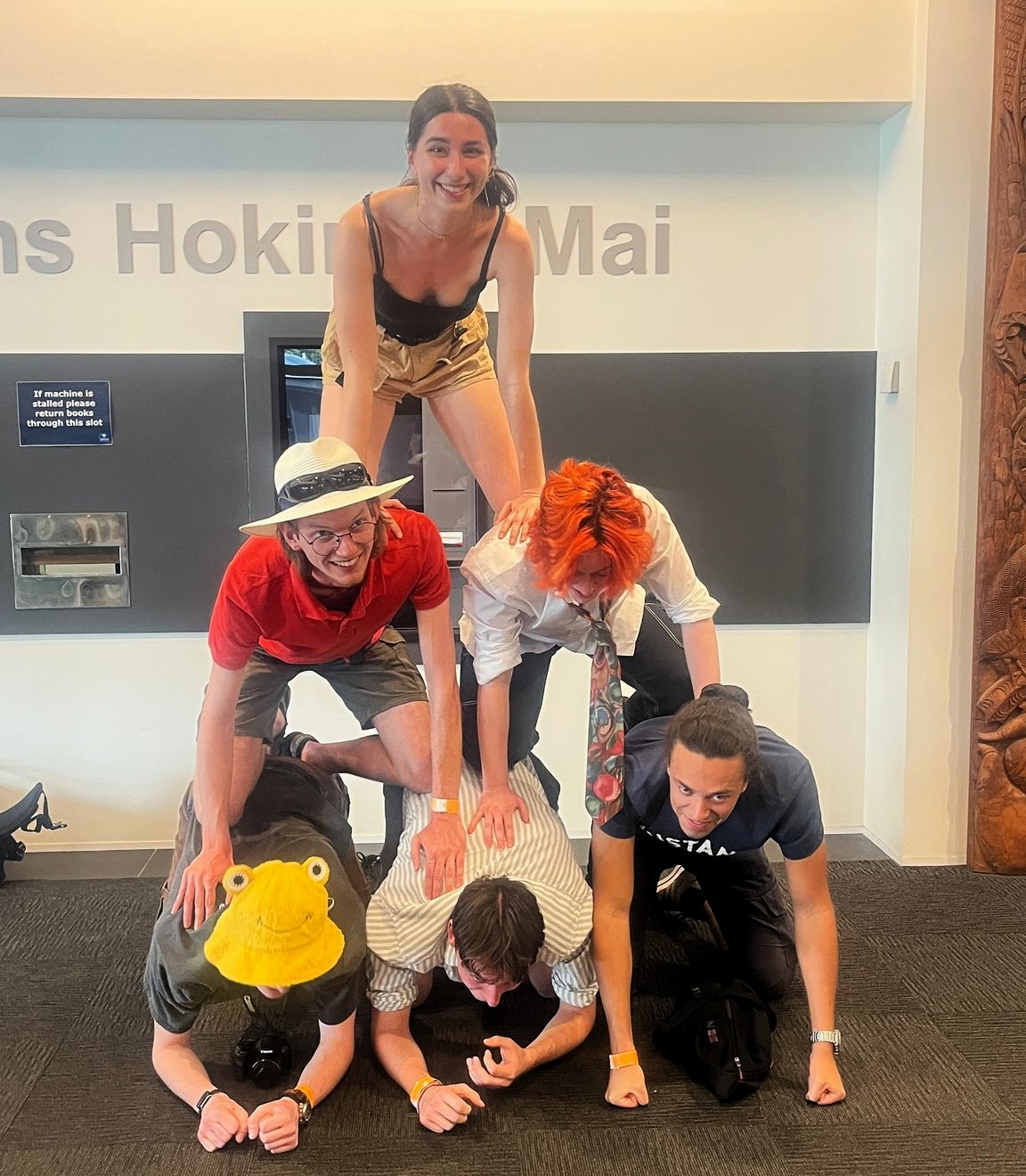
The rest of O-week was quite quiet for my part, went climbing on Tuesday at the University training and gym centre, an insanely ambitious building with everything from a gym floor to swimming pools to sport courts. On Wednesday I got two vaccine shots for Meningococcal disease which is highly encouraged here, especially if living in student accommodation. They did however take quite a bit out of me, and as you will later see, actually a lot more than I thought at the time. So with that in mind I did only smaller excursions on Wednesday and Thursday, walking the coast front and causeway walk from Parnell to Mission bay, which was nice but would have been so much better without walking right next to a busy road.
And then on Thursday taking the ferry over to Devonport and exploring the volcanoes, and the fortifications and artillery batteries constructed there around the world wars. It was an odd experience, as considering New Zealand’s geostrategic location the actual threat to them was miniscule when comparing with the fortifications out in the Stockholm archipelago. But on the other hand they actually fought in both world wars whereas Sweden has enjoyed more than 200 years of peace. All in all an odd mix of feeling like they might have only been “playing” war with their defences, all the while having actual experience of it.
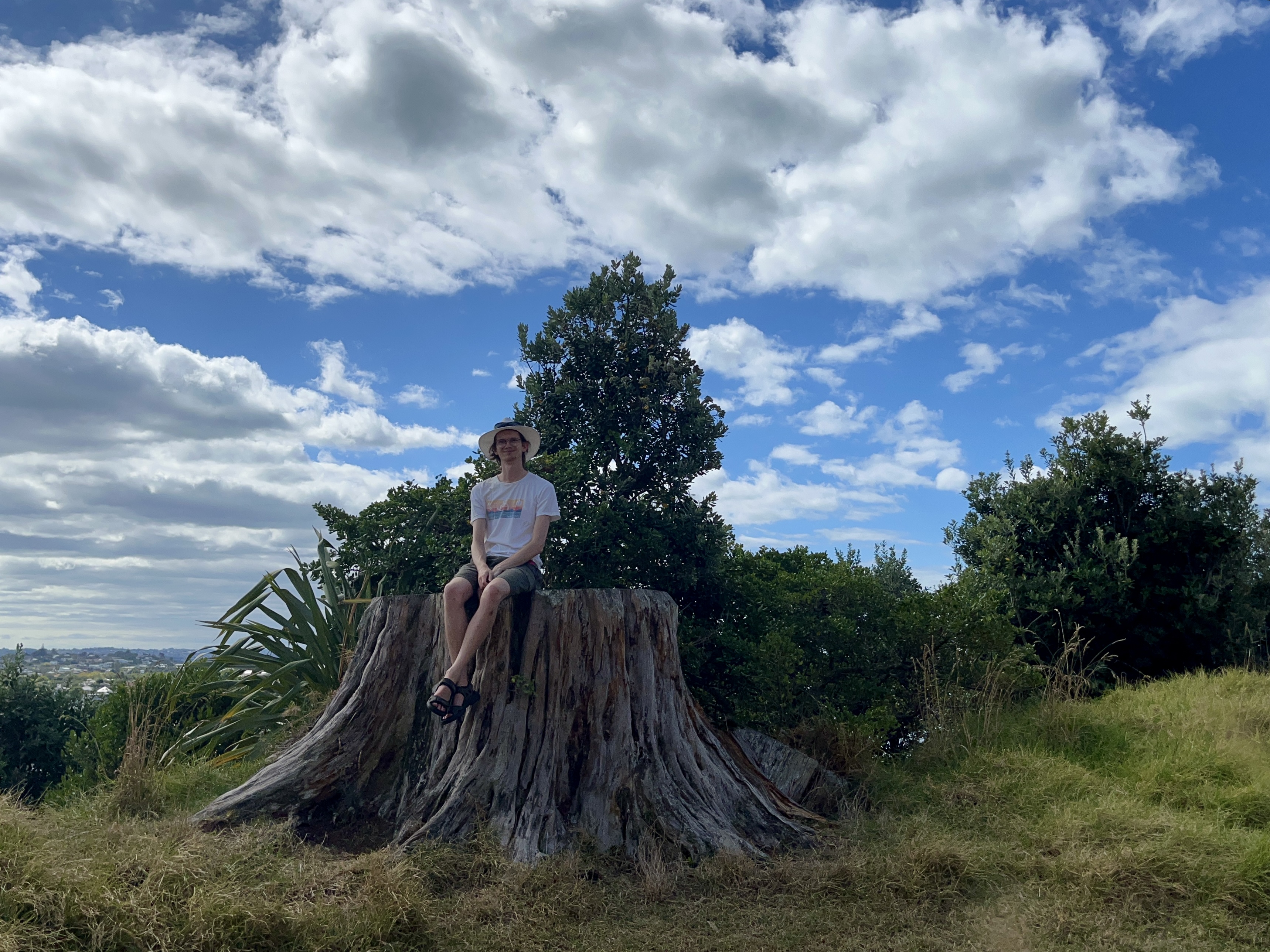
But the big adventure of this week was our trip out to the West Coast, the Waitakere ranges and Piha on Friday the 28th of February. We had got together a group of us to rent a van and drive the 50-minute trip out through the Waitakere ranges to visit the West Coast, but we ended being more people than could fit in one van and through some miscommunication there was suddenly 2 extra cars plus the van. One of the cars split off but the rest of us (10 people in total) would spend an amazing day out on the cliffs and beaches of the Tasman Sea.
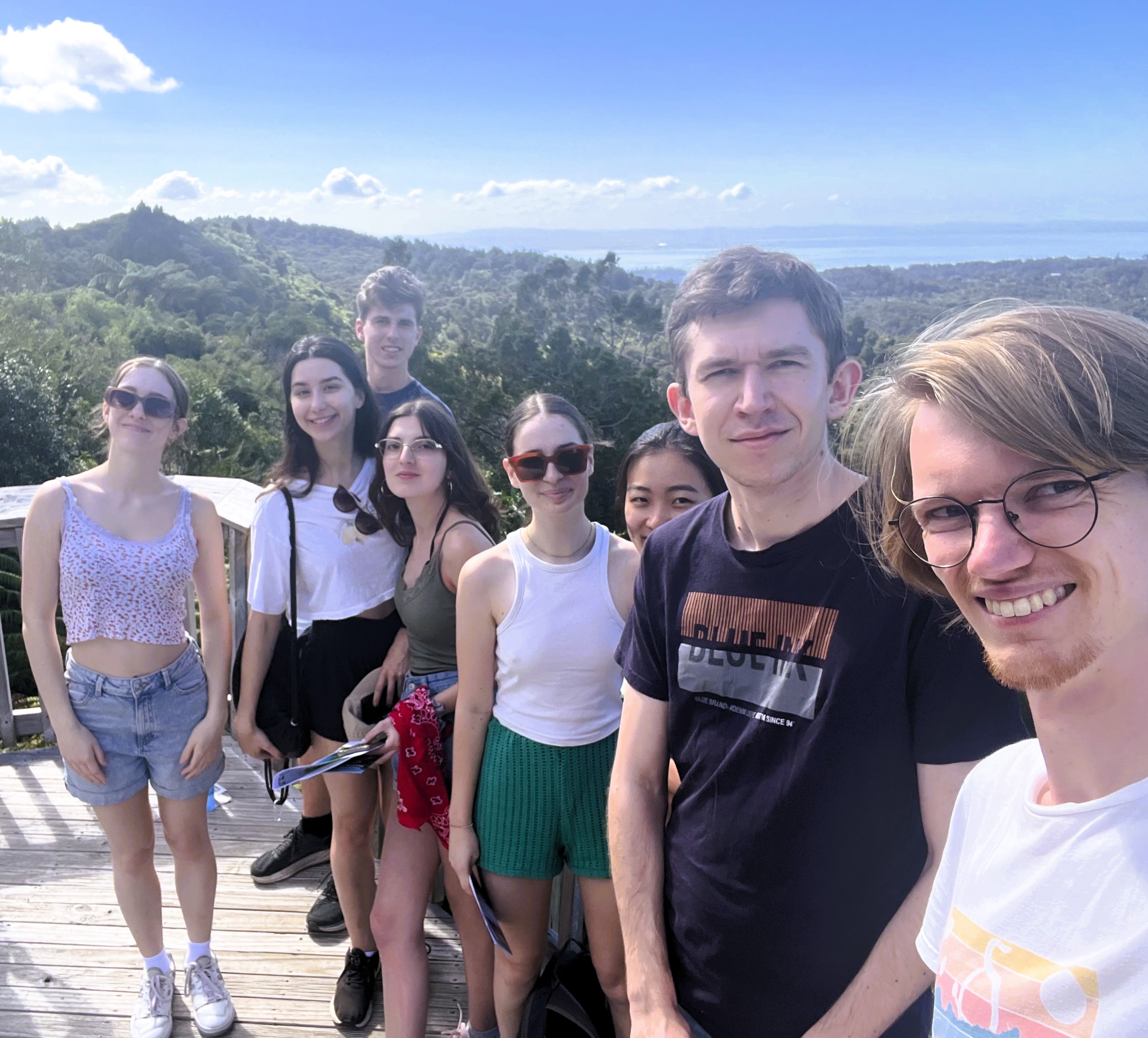
Our first stop was the Arataki visitor centre on the eastern side of the Waitakere ranges where we met up with the car, enjoyed the fantastic views over the forest, hills and ocean, and figured out how to continue our drive to the coast and our first stop Karekare falls. This was made more complicated by the fact that much of the ranges are closed to mitigate the Kauri dieback, a tree disease spread by soil affecting one of New Zealand’s most iconic trees, the Kauri.
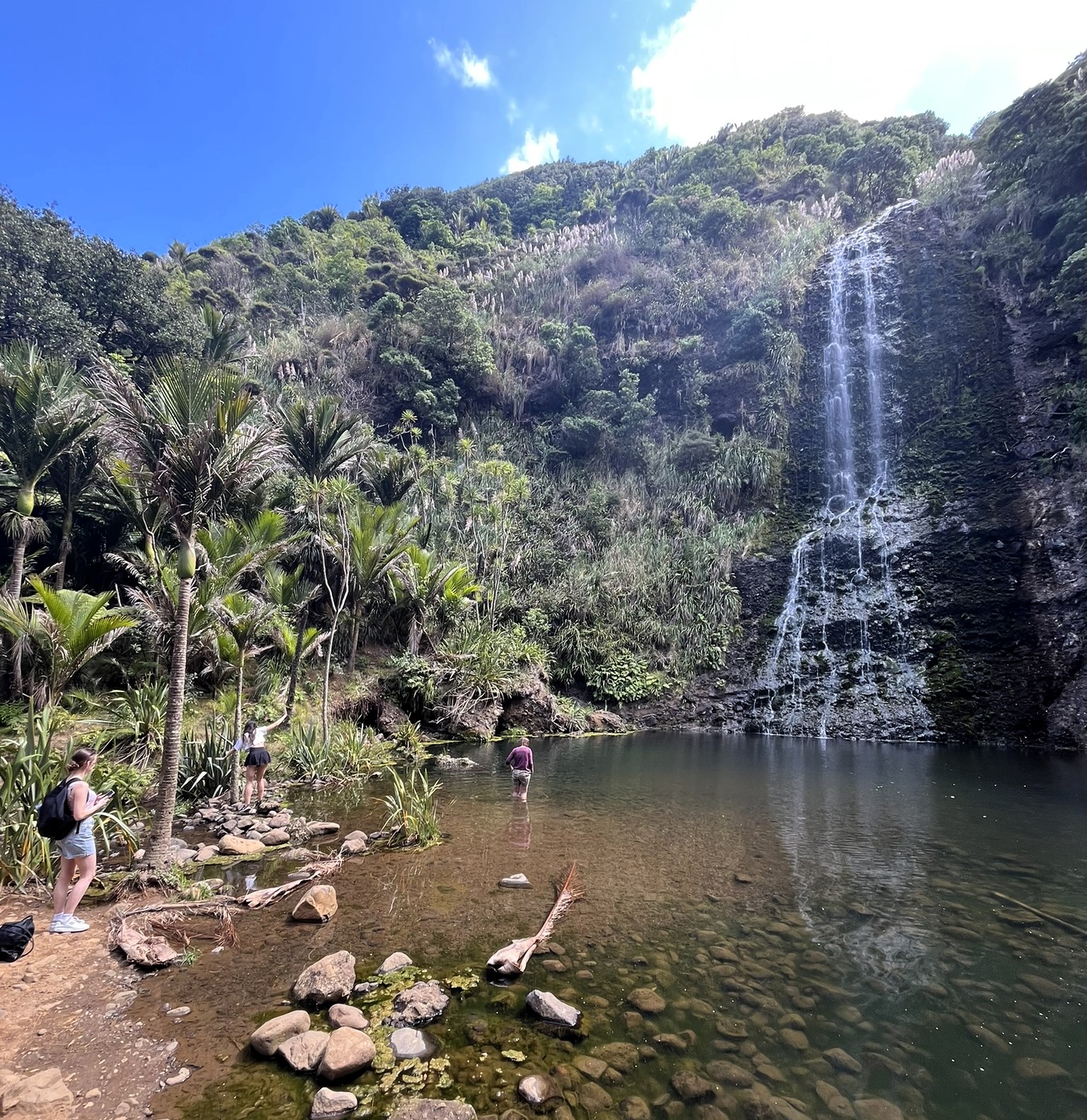
After quite a bit of navigating small mountain road we arrived in Karekare, and started out with a short 5-minute walk up to the water fall. It was definitely a nice water fall, but even better I would say was a secondary stream running down a steep cliff and the tunnel of trees which created a Middle Earth-esque impression of wonder.
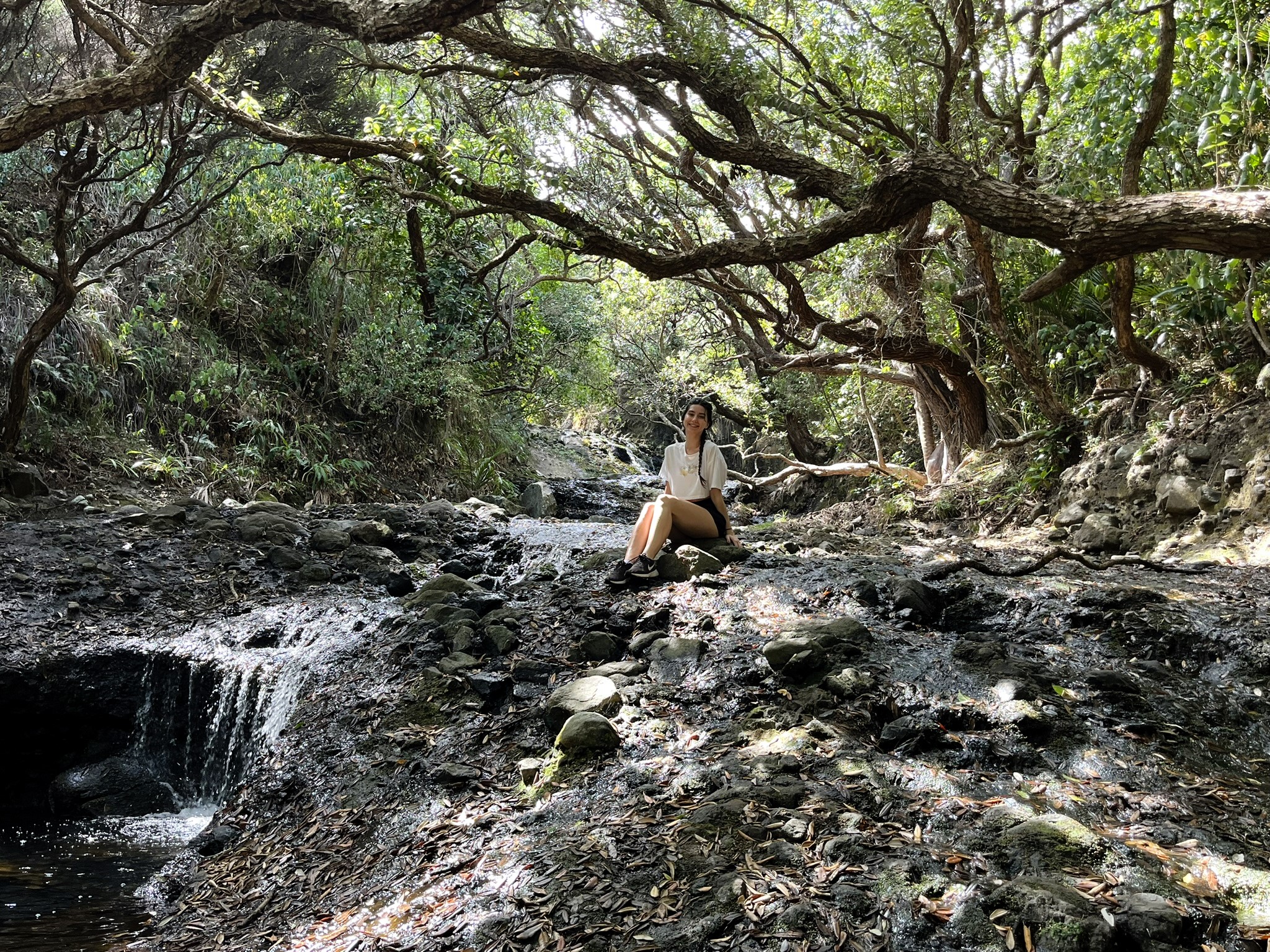
After the waterfalls we set out on the main part of our trip, the hike up the Comans Track and along the cliff tops above Mercer Bay, 150 meters up. This was a relatively challenging hike, primarily due to the height. But as we reached up to the lower cliffs and could watch the blue water rolling in over the black sand beaches with a lone rock standing proud in the middle of it. And then a second beach 8 kilometres to the southwards before disappearing behind the far away cliffs. As we continued to climb the views only got better and better, which in turn lead to quite a slowdown in our pace 😅

We had our lunch on an outlook which was situated on the edge of a probably 150 meter tall cliff which fell straight into the sea, overlooking a secluded beach surrounded by the sea on one side and cascading cliffs on the other. It was probably one of the prettiest places I’ve ever had lunch, and my egg sandwiches tasted amazing after a two-hour hike and quite a late lunch. Looking down into the cove there were tall caves carved into the cliff sides (this was during low tide), and violent waves crashing into the black sand. That mix of black sand torn into the blue sea and the white foam is something I think I’ll always carry with me
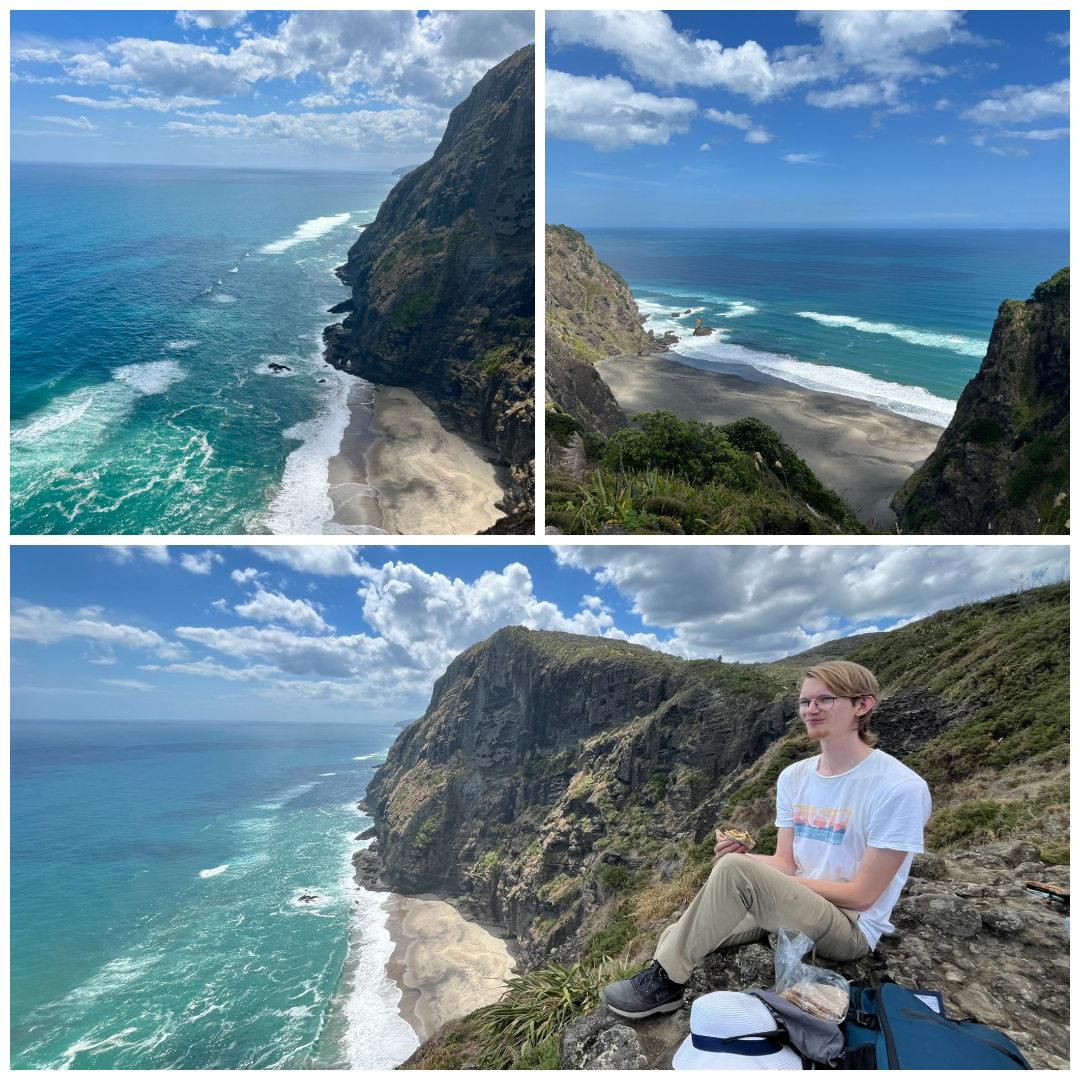
After lunch, we hurried up our tempo a bit and after maybe an hour more of hiking, still interspersed with awe-inspiring views we arrived back at the car. From there it was back up the winding roads and then onwards to Piha proper. We went out onto the spectacular black beach with it’s surprisingly hot black sand, and were happy to find that the beach was lifeguarded. Especially as we quickly found out that the waves were exceptionally strong and even in the watched area we were told to not go further than waist deep. So in me and some of the others dove while the rest sunbathed after the quite intense hike.

The water was quite cool but incredibly refreshing, and the waves a lot of fun to play in. However, they also had a tremendous amount of force when breaking being more than a meter high with it being quite difficult to even stay on your feet. And my few attempts at body surfing failed spectacularly as the wave crashed me down into the foamy sandy water, and it was all I could manage not to get slammed into the sand.
Swimming was followed by exploring the beach which was at the lowest tide. And as the beach had an incredibly shallow incline this meant that hundreds of meters of beach underwater on the map was open for exploration. Roving around the foot of Lion Rock (the big formation in the middle of the beach in the picture above) we found a small system of caves maybe 10–15 meters deep, carved out by the sea and presumably partially underwater during high tide.
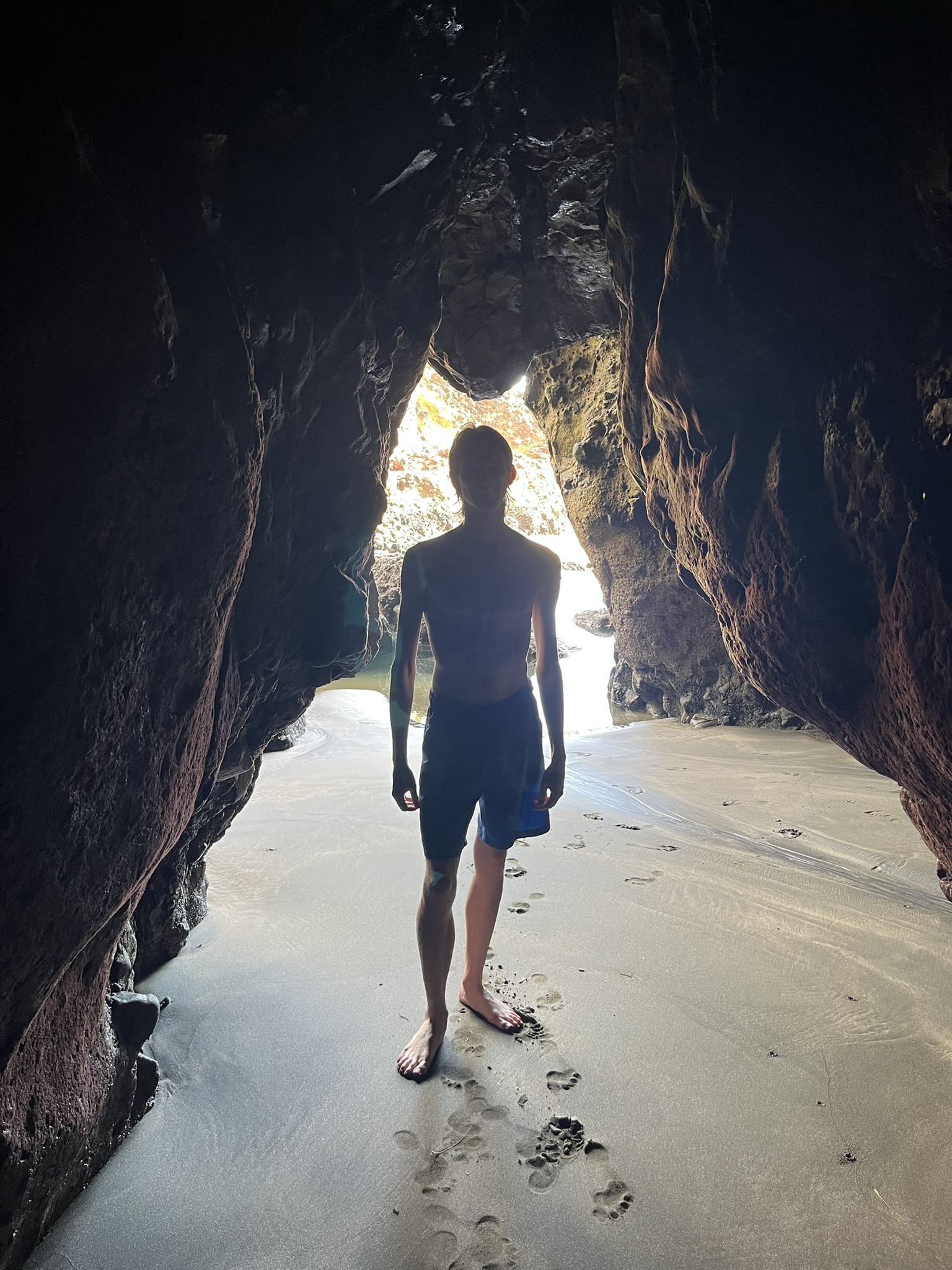
And then going out onto the sand flats to the south of the beach which are also partially covered by the sea at high tide. Here we found a maybe 50-meter deep hole through the cliff face through which the open ocean was visible. And I also ventured out onto the cliffs overlooking deeper sections to see some wonderful and intimidating waves crashing in over them.
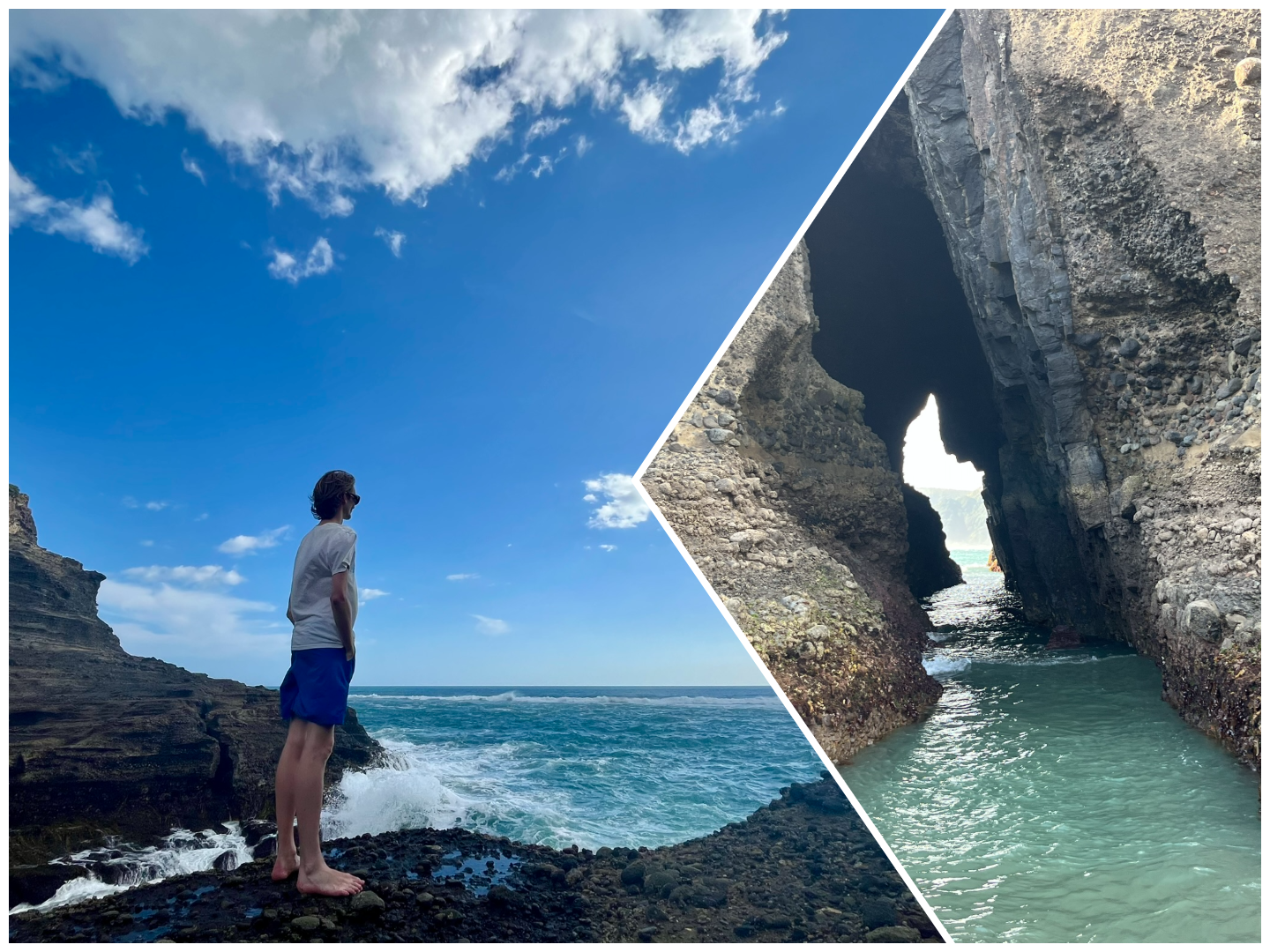
Then some fish and chips on the beach, which might have dragged on a bit too long as we still had two more items on the agenda: the Kitekite falls and catching the sunset. This meant that our trip up to the waterfall was a bit stressed, going at a brisk walking speed through the rain forest along a stream till we reached the waterfall. Once again a large pond with a fantastic though maybe a bit dry waterfall falling maybe 30 meters. And with some kind of eel swimming in the pond.
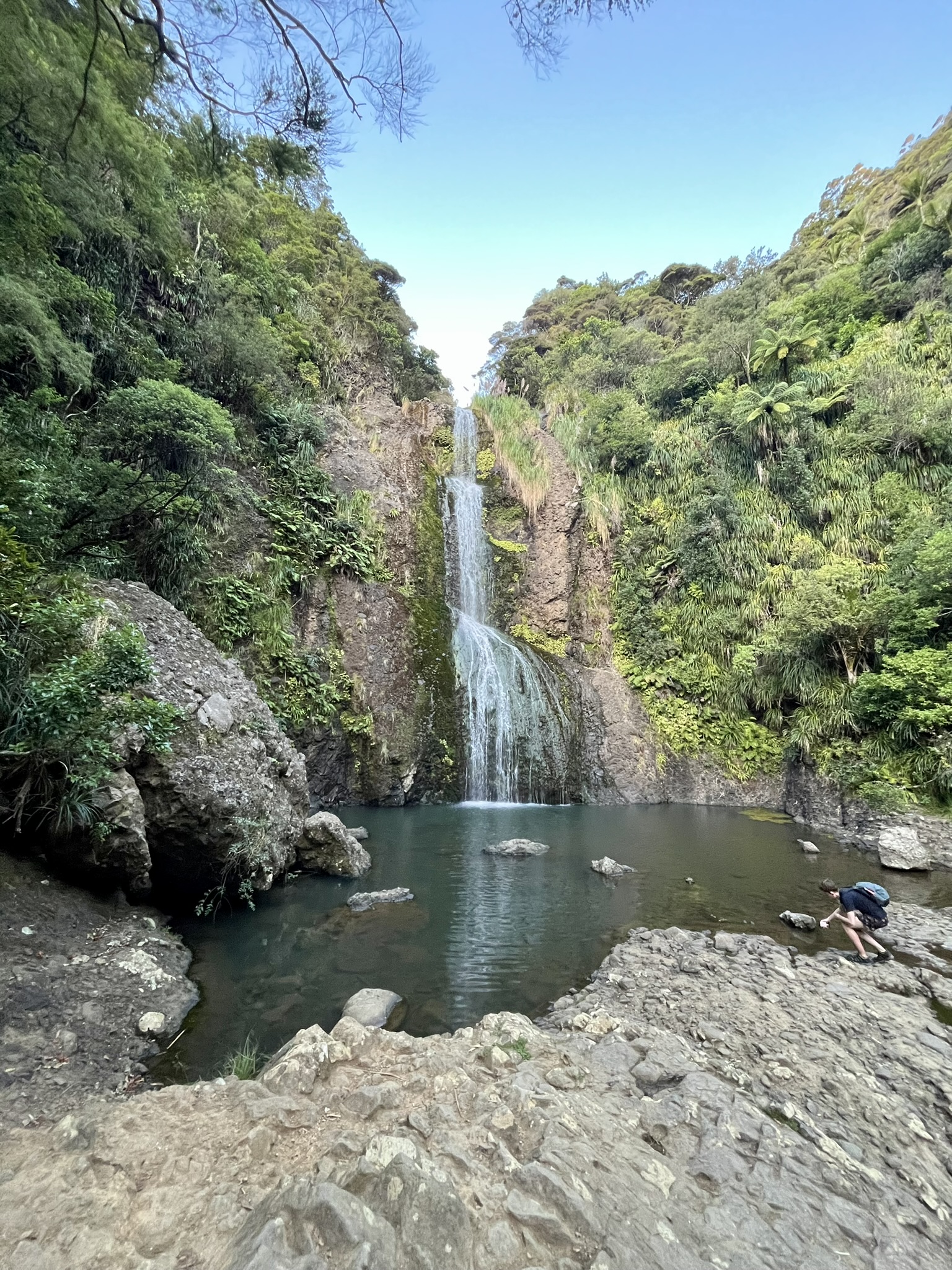
Then rushing back to the car and driving back down to the beach through the red golden light of the sun setting in the sea. Only to reach the beach just as the last sliver of the sun passed below the Tasman waves. We stayed a bit longer after that enjoying the red glow over the black sand, before embarking on the drive home through the mountains in the dark. But it went well without any problems, and we arrived back in Auckland almost exactly 12 hours after we left, having had an incredibly wonderful trip.
